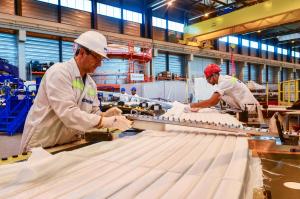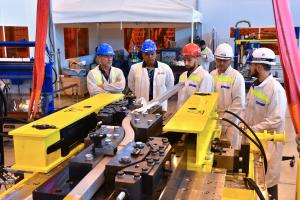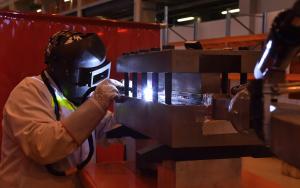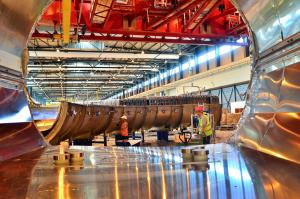Turning tables and hot resin
One of only two manufacturing facilities located on the ITER site, the Poloidal Field Coils Winding Facility was constructed by Europe to house the winding, impregnation and assembly activities for ITER's largest ring-shaped magnets. Manufacturing is underway now on a 17-metre-in-diameter poloidal field coil called PF5.
The double pancakes are then transported by overhead crane to the vacuum pressure impregnation station and lowered into a custom-fit mould. Epoxy resin, injected over the course of several hours, fills all gaps and hardens the glass-fibre tape under the effect of heat and pressure. A 36-hour "curing" phase at 140 °C completes the process, which gives the double pancake rigidity and ensures electrical insulation. During this process the conductor ends, which carry the terminations to be used for joints between the double pancakes, are isolated by an "insulation breaker," which keeps the resin from binding these areas. In this picture, one double pancake is undergoing impregnation in the background, while assembly is underway on the impregnation mould for another.






